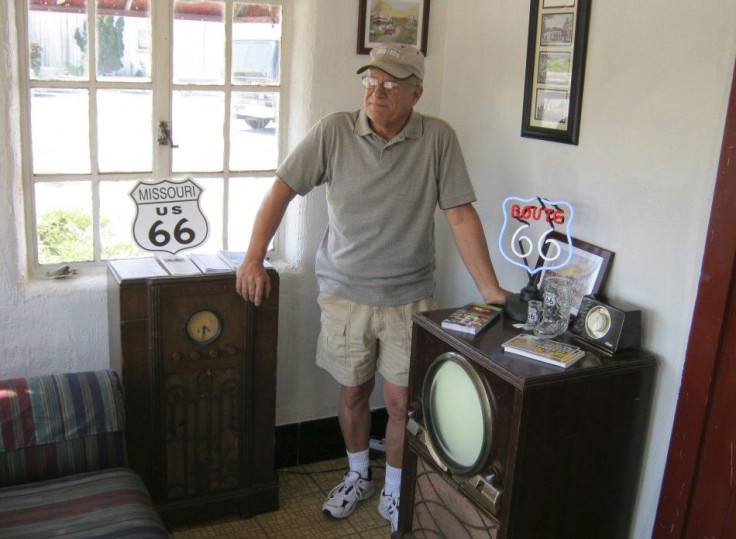Route 66 Still Holds Allure For Travelers, Industry

(Reuters) - Route 66 hasn't been a real highway for almost three decades.
The last section of the fabled U.S. route from Chicago to Santa Monica, Calif., was dropped as a federal highway in 1984. But its hold on travelers' imaginations has revived motels, diners, souvenir shops, gas stations and other buildings along the old route.
The enduring fascination, along with some federal grants, has helped Route 66 thrive, even as people old enough to remember its heyday die off.
People are looking to see the real America, not Walt Disney's version, said Ron Hart, director and founder of the Route 66 Chamber of Commerce in Carthage, Mo.
A Rutgers University study released in March estimated that people spend $132 million annually along old Route 66, which crosses eight states and is marked in some places by ceremonial signs.
Visitors encounter attractions like the Boots Motel, which Hart, as property manager, restored to its late 1940s glory ahead of its re-opening last month.
Built in 1939 and once visited by actor Clark Gable and singer Gene Autry, the Boots had fallen into disrepair and become a flophouse for drug addicts and illegal immigrants, Hart said.
Under its new owners, five rooms have been renovated and more are set to be redone. Guests are treated to touches like real keys, chrome light fixtures, chenille bedspreads, monogrammed towels, built-in dressers and an old radio tuned to a station that plays 1940s hits. No TVs in the rooms -- just a non-working late 1940s model in the lobby. If you want ice, the staff brings it to your room.
We sit in front of the motel every night and wave to the people driving by, said Deborah Harvey, a historic preservationist and co-owner of the Boots. People stop, pull up a chair and tell us their stories about the motel.
Route 66 was completed in the mid-1920s and gained fame in the 1930s when it was described in the John Steinbeck novel The Grapes of Wrath as the mother road from the Dust Bowl to the promise of California. It later became the family vacation route to the Southwest and was romanticized in movies, music and on television.
It wasn't the only highway, or the first or the longest, but through the quirks of pop culture it became famous, said Mark Spangler, curator of the Route 66 Museum in Lebanon, Mo.
TOUGH NAVIGATION
The biggest challenge to modern-day Route 66 travelers is staying on the original route, said David Knudson, founder and executive director of the non-profit National Historic Route 66 Federation. Signs are inconsistent along the long route and many are stolen for souvenirs, he said.
It's hard to follow without a good map, said Knudson, whose group publishes a Route 66 map and guides. Some parts of the road have deteriorated, some are in good shape and some parts were removed years ago and replaced with cornfields. About 80 percent of the original route is still drivable.
The federal government no longer maintains any of the route, so repairs are done by various cities, counties and states that took over each section, Knudson said. His federation has a program that recruits people to monitor the condition of 100-mile stretches of the road.
But federal funds are available to owners of Route 66 businesses. The National Park Service's Route 66 Corridor Preservation Program has paid an average of $150,000 annually since 2001 for business renovations along the road that are matched privately, according to the Rutgers study.
The survey found that the most popular sites along Route 66 are the old roadside diners, motels, gas stations, souvenir shops, theaters and other businesses. According to the study, 230 buildings along the route are on the National Register of Historic Places.
The route includes quirky sights like the Cadillac Ranch near Amarillo, Texas, which features a series of half-buried Cadillacs with their fins up. In Catoosa, Oklahoma, there is a giant open-mouthed whale built over a popular Route 66 swimming hole.
People also travel Route 66 for the scenic plains, mountains and rivers it passes through, Knudson said. It is still the American definition of the open road, especially as it passes through the remote southwestern states, he said.
It's the adventure that draws many people, Knudson said. There is certainly a lot to be said about that.
(Reporting By Kevin Murphy; Editing by Colleen Jenkins and Stacey Joyce)
© Copyright Thomson Reuters 2024. All rights reserved.






















